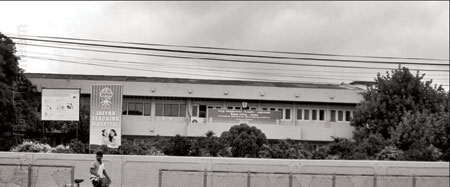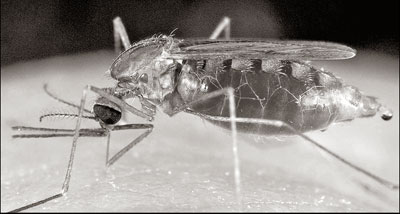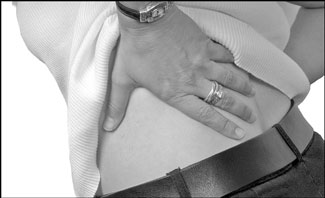
Better
health standards in Jaffna
By Nilma DOLE
After the dawn of peace, Jaffna's health sector looks positive with
health infrastructure and development of key hospitals and clinics to
help the people of the Northern Province. At the forefront of developing
and supporting the health sector in Jaffna was the regional conference
held by the Sri Lanka Medical Association which began on January 27 and
ends today.
President of the Sri Lanka Medical Association Prof.Vajira
Dissanayake said, "Our regional workshop is aimed at restoring the faith
of the Jaffna medical services for the people and to say that they need
not travel from all the way for good and high-quality health services
and facilities." He said that there needs to be more development in
health infrastructure, but money is trickling in and corporates are now
becoming more attuned to helping the people of Jaffna.
This is evident from the much-publicised donation walk for Trail Sri
Lanka which generated funds to build a Jaffna Cancer Hospital.

"It is true, there is a form of cancer which is spreading in Jaffna
and we still can't identify it. As a genetologist, I am happy to see
many young doctors who have passed out from here and abroad, have been
interested in working in the Jaffna health sector," said the professor.
He said the doctors are optimistic and are confident to take their
knowledge to Jaffna which can be seen in the mutual exchange of ideas
and knowledge between all other Universities in Sri Lanka with the
University of Jaffna.
Facilities
"We hope that Jaffna will have the facilities and health expertise
that can be on par with what we have in Colombo. We are also taking this
regional workshop to train people in Jaffna for it doesn't only the
doctors but the midwives, nurses and other medical staff," he said.
The professor said, "The objectives of the regional workshop is in a
bid to boost interest in Jaffna and to sensitise policy makers and
healthcare administrators on the issues faced by healthcare workers in
Jaffna."
Feasible solutions
Also they hope to negotiate for feasible solutions to improve the
healthcare service delivery in Jaffna. "Representatives of various
categories of healthcare workers will voice on the challenges they
encounter in delivering healthcare services in the Northern province,"
said Prof. Dissanayake.
Prof.Dissanayake said, "The chief guest for the regional conference
is Prof.Lalitha Mendis, Emritus Professor of Microbiology, Faculty of
Medicine (Colombo University)."
There will be concurrent workshops that will revive interest in
training doctors and medical personnel in Jaffna. "Jaffna certainly has
the potential in developing its infrastructure and managing with their
resources because the doctors there have considerable experience in
doing that. Hence, they are better knowledgeable in using limited
resources the best possible manner and saving lives too," commended the
professor.
Even though Jaffna's health sector is still in developing stages,
there is a marked improvement in the health facilities since peace
dawned.
"The Sri Lanka Medical Association is the oldest medical association
in Asia and Australasia making it a pivotal body in developing medical
policies and decisions which will make sure what is spoken at the
conference is implement," said the professor.
According to the SLMA president, there are healthcare needs which
need to be addressed and areas such as mental health and cancer research
have to be urgently seen into.
"Sri Lanka has the best doctors who are not only trained locally, but
most of them have gone abroad to train in the UK and other countries.
The issue is that we can't generalise the brain drain problem but
there is a sparked interest by the younger generation of medical experts
to come back and serve the country, especially in Jaffna," said the
professor.
Demand
Moreover, the demand for doctors are great in Jaffna which goes to
show that even though it is peace, there are different categories of
development of medical health.
"There is a motivation factor now that the war is over and there is a
significant improvement on the part of the medical experts," said the
professor. He said that unlike in cities where more is not enough, in
Jaffna, if you treat the patients a little, it goes a long way.
"Even if the doctors do as much as they can, residents in the cities
are still not appreciative of the medical advice and resources they get
but in Jaffna, a little help goes a long way because if you treat them,
they are happy with the little act of kindness," said Prof.Dissanayake.
Appreciative
As a result, doctors working in the Northern Province say that
working with patients from the most far-flung parts are the most
appreciative and they love working with them.
"We are happy that we can take a workshop of this nature to the
Northern Province to ensure that we at the SLMA have a keen interest and
that we have not forgotten the medical sector there," said
Prof.Dissanayake.
The keynote speakers include Dr.Rathini Jude, Northern Provincial
director, Dr.Kapila Jayaratne, Dr.Mukunthan, Dr.S. Raviraj, Dr.
P.Lakshman, Dr. G. Sathiyathas, Dr. A.Keetheswaran, Prof. K.Sivapalan
(University of Jaffna), Dr.Malik Fernando (Ethics Committee) and the
Health Minister, Maithripala Sirisena.
New malaria maps to guide battle against disease
A new suite of malaria has revealed in unprecedented detail the
current global pattern of the disease, allowing researchers to see how
malaria has changed over a number of years.

In a study published in the Malaria Journal, a multinational team of
researchers from the Malaria Atlas Project (MAP), funded mainly by the
Wellcome Trust, present the results of a two-year effort to assemble
all available data worldwide on the risk of Plasmodium falciparum
malaria, the most deadly form of the disease. Using computer modelling
and data on climate and human populations, they have revealed the
complex landscape of malaria across the globe. The maps build on the
first ever Atlas of Malaria-Eliminating Countries published earlier this
year.
Malaria continues to exert an huge burden of illness and death
worldwide but, after decades of neglect, the war against the disease has
entered an unprecedented era: it is high on the policy agenda,
international funding is beginning to translate into real increases in
populations protected by bed nets and other key interventions, and a
growing body of evidence points towards important reductions in illness
and death.
The maps have been made freely available, along with a wide range of
other malaria resources via the launch of a new online portal at
www.map.ox.ac.uk.
The research was led by Dr Pete Gething from the Department of
Zoology at
the University of Oxford. He says: "These new maps and our online
portal are really aimed at everyone involved in the battle against the
disease: from the major international organisations and funders, to
other scientists, to those actually doing the disease control work on
the ground."However, in order to allocate funding where it is most
needed, accurate maps detailing where the disease is most intense and
where the largest concentrations of people at risk are found.
The new maps reveal for the first time the startling variations in
malaria risk, even over short distances.
Dr Simon Hay, who leads the MAP group in Oxford, explains: "It's
increasingly clear that malaria transmission is extremely heterogeneous.
This means a one-size-fits all approach to controlling is not
appropriate.
What works in one place might not work elsewhere. These maps are
designed to help unravel that complexity and provide a practical guide
to help target resources."
Sir Richard Feachem, Director of the Global Health Group at the
University of California, San Francisco, and Chair of the Malaria
Elimination Group has welcomed the role the new maps can play in
pursuing malaria elimination. He says: "From the perspective of
elimination, the key message is that malaria transmission is actually
very low across large swathes of the endemic world - including the 36
countries currently engaged in elimination programs.
Mapping transmission levels in detail helps to guide these
initiatives and highlights how, with concerted effort and sustained
financing, we can continue to shrink the malaria map."
- MNT
Cervical cancer screening via self-collection
Human papillomavirus (HPV) testing of self-collected specimens may be
a more effective way to screen for cervical cancer in low-resource
settings compared to visual inspection with acetic acid (VIA) and
liquid-based cytology (LBC), according to a study published in the
*Journal of the National Cancer Institute.*
Cervical cancer is the third most common cancer found in women with
approximately 530,000 new cases each year resulting in an estimated
275,000 deaths. In developed countries, cervical cancer incidences have
declined, mostly due to cervical cytology screening campaigns, which
requires significant medical resources and laboratory infrastructure.

Cervical cancer is on the rise in the developing world, with
one-seventh of the world's cervical cancer cases in China, where there
is no nationwide screening program for the disease yet.
There, researchers have proposed that HPV testing of self-collected
Pap specimens might serve as an alternative or complementary method of
primary cervical cancer screening method.
To determine the effectiveness of HPV testing of self-collected Pap
specimens (termed "Self-HPV testing" in the report), Professor You-Lin
Qiao, M.D., Ph.D., of the Cancer Institute/Hospital at the Chinese
Academy of Medical Sciences/Peking Union Medical College and colleagues,
assembled individual patient data from five population-based cervical
cancer-screening studies in China from 1999-2007, in which participants
received HPV testing of self-collected Pap specimens, HPV testing of
physician-collected Pap specimens, LBC, and VIA. The researchers then
analysed the pooled data to detect biopsy-confirmed cervical
intraepithelial neoplasia grade 2 or more severe (CIN2+) or CIN3+. Of
the 13,140 rural Chinese women screened for cervical cancer, 507 were
diagnosed with CIN2+, 273 with CIN3+, and 37 with cervical cancer.
The researchers found that HPV testing of self-collected Pap
specimens was more sensitive and less specific than VIA and LBC but less
sensitive and similarly specific compared to physician-collected Pap
specimens.
They conclude that self-collection with HPV testing could help expand
China's current screening outreach. "Although it is not specific enough
to be a stand-alone test, self-HPV testing provides sensitive results
without pelvic exams, medical professionals, or health-care facilities
and thus has the potential to serve as a primary cervical cancer
screening method for women, regardless of their geographic location or
access to health care," the researchers write.
Self-sampling procedures were instructed by medical professionals,
and it is unclear whether unsupervised self-examinations would give out
similar outcomes. Still, the researchers write, "The incorporation of
Self-HPV testing in the Chinese government's planning of a national
cervical cancer screening program would complement the current program
by increasing its coverage of unscreened populations."
In an accompanying editorial, Patrick Petignat, M.D., of the
University Hospitals of Geneva, writes that while HPV Self-Sampling for
primary cervical cancer screening may help increase the number of women
being screened, introducing a new screening method should be met with
caution. He feels that determining both the cost effectiveness of the
procedure as well as women's personal willingness to undergo
self-screening is essential; furthermore, patients need to be properly
educated about self-screening."Efforts are still needed to increase
awareness about HPV and cervical cancer, and more information is needed
about the reliability of the method," Petignat writes.
"Health-care professionals should provide sufficient support to
participants to properly interpret their test results, thus avoiding any
delay to follow-up and treatment." - MNT
The genome and timing of menopause
An international team of researchers has discovered 13 new regions of
the genome associated with the timing of menopause.
These genes shed light on the biological pathways involved in
reproductive lifespan and will provide insights into conditions
connected to menopause, such as breast cancer and heart disease.
Menopause is a major hormonal change that affects most women when they
are in their early 50s.
The timing of menopause can have a huge impact on fertility, as well
as influencing the risk of a range of common diseases such as breast
cancer.

It has been known for some time that genetic factors influenced the
onset of menopause, however until recently very few genes had been
identified.
In the new study, published in the journal Nature Genetics, Dr Anna
Murray, University of Exeter, Peninsula College of Medicine and
Dentistry (PCMD) Dr John Perry, PCMD and WTCHG, University of Oxford,
and dozens of international collaborators, examined the genomes of over
50,000 women.
They identified 13 novel gene regions associated with menopause
onset, and confirmed four previously identified. Most of the 17 regions
include genes related to DNA damage/repair or the immune system, whilst
others are linked to hormonal regulation.
Dr Perry said: "The new findings highlight biological pathways not
previously associated with reproductive lifespan, and may provide
insightsinto the other conditions connected with menopause age, such as
cardiovascular disease and breast cancer."
The association with breast cancer is related to the length of time a
woman menstruates in total and is thought to be related to oestrogen
exposureover a lifetime - in fact earlier menopause is protective for
breast cancer. Cardiovascular risk is increased in post-menopausal women
compared to pre-menopausal and reduced oestrogen is thought to be a key
component of this increased risk. Genetic studies will be beneficial in
working out exactly what the relationships are between these conditions.
Dr. Murray added: "Menopause is a process most women go through, yet
we know very little about what governs the timing of this key event in a
woman's life.
By finding out which genes control the timing of menopause we hope to
be able understand why this happens very early to some women, reducing
their chances of having children naturally."
The authors said they expected further research will identify
additional genes, and also assess the impact of these genetic regions on
related reproductive disorders.
The research team are currently investigating women who had very
early menopause, before 45 years, to determine whether the new menopause
genes play a role in this clinically important condition which affects
over five per cent of women.
whyhotflashes.com
Childhood obesity should be tackled through family focus
Parents should be involved in treatment programs for their obese
children, according to a new scientific statement published in
Circulation: Journal of the American Heart Association.
"In many cases, the adults in a family may be the most effective
change agents to help obese children attain and maintain a healthier
weight," said Myles S. Faith, Ph.D., chair of the American Heart
Association's statement writing group "To do so, the adults may need to
modify their own behaviour and try some research-based strategies."
 The authors evaluated research on the outcomes of behavioural change
strategies that included high involvement by parents and other adult
caregivers of obese children in the context of treatment programs. The authors evaluated research on the outcomes of behavioural change
strategies that included high involvement by parents and other adult
caregivers of obese children in the context of treatment programs.
The treatment programs were typically multi-disciplinary -
implemented by a team of psychologists, medical staff and dieticians in
a university or hospital clinic setting.
Access to such intensive treatment programs is limited for many
families across the country.
"While these strategies were implemented by healthcare professionals
in a treatment program, the psychological principles on which they are
based provide sound guidance for families of obese children as well,"
Faith said. Strategies that have been linked to better outcomes include:
- As a family, identify specific behaviours that should be changed.
- Set goals and monitor progress. The goals should be clearly
defined, such as reducing or limiting television screen time to no more
than two hours per day.
- Provide a home environment that encourages healthier choices.
For example, limit temptations at home, such as higher calorie
desserts, while providing access to a variety of fruits from which
children can choose.
- Parents should praise their children's progress and, instead of
criticising, use "slips" as an opportunity to help children identify
ways to make different choices if the same situation arises again.
- Food shouldn't be a reward or withheld as punishment.
- Keep track of progress toward goals, using a written or online
tracker.
Previous research has yielded mixed results on the effectiveness of
parental involvement in family-based treatment for childhood obesity
how-much-should-i-weigh.
- antofredchem.com |

